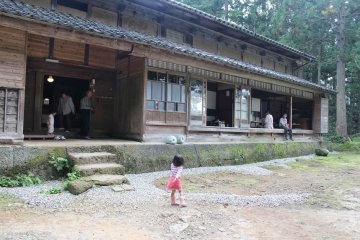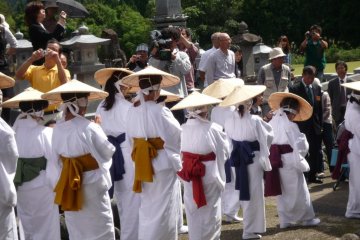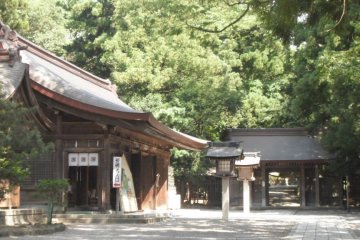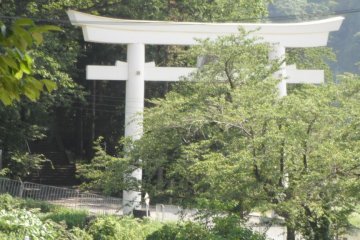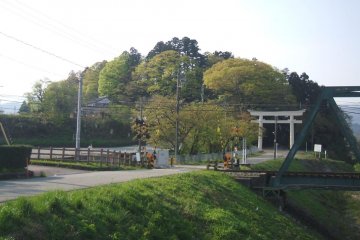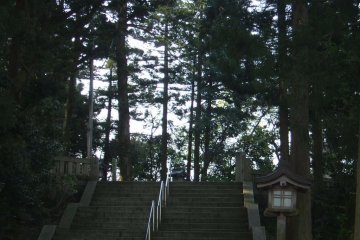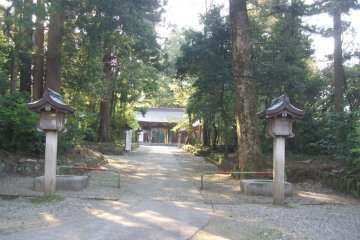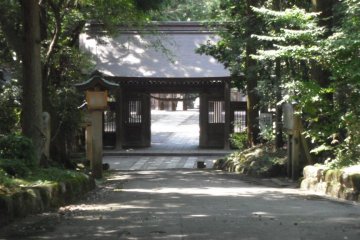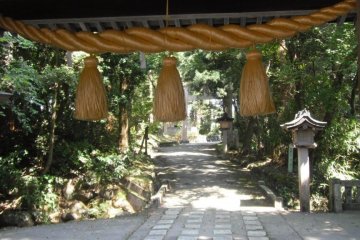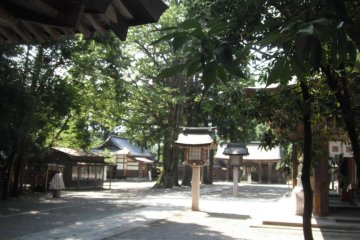To the south east of Toyama prefecture lies Tateyama (立山), a magnificent three-peaked mountain, and one of the tallest in the Hida mountain range (Northern Alps). It is also one of the three most sacred, or “Holy Mountains” 三霊山 (Sanreizan) of Japan, along with Fujisan and Hakusan . This dates back to the ancient mountain worship of Japan, and the idea that the mountains themselves were regarded as gods, and a holy place where the gods descended from heaven.
Spread through the caldera valley of Tateyama is Oyama Jinja - I use the word “spread” because there are three sites. I am going to tell you three parts of a story about these very special places that captured my heart shortly after I moved to Toyama.
It is not uncommon for a Shinto Jinja (shrine) to be located across more than one site, and so is the case with Oyama Jinja (雄山神社). The shrine at the highest point is called the Hongu (本宮), the midway shrine Chugu (中宮), and the one at lowest elevation is Gegu (下宮). There have been times during Oyama Jinja’s history when women were not permitted to climb mountains; also if you were perhaps ill or infirm you could not reach the Hongu; and during winter it is just about impossible to get to the top of the mountain, so many prayed at one of the lower locations.
I will tell you more as I piece this story together. People once (and still do today) make a pilgrimage to the Oyama Jinja hongu on Mt Oyama, via the lower shrines - today we can choose from a range of transport but until relatively recently there was only one option – walk!
Iwakuraji is a small town on the outskirts of Toyama city, in the lower foothills of the Alps. In my first week of living in Toyama I discovered the magic of Oyama Jinja’s gegu. Coming from a very small town in Australia I was shocked at first by the size and speed of life in Toyama (many may be laughing while they read this!) My first home in Toyama was an area that I would call urban-rural fringe but it was a too much for a country girl like me! Someone said to me in passing when I was first catching the local train “make sure you catch the right one or you will end up in the mountains!” – the light goes on in my head, my heart leaps and that was exactly what I did - I jumped on that train to the mountains to see where it went and found myself in Iwakuraji.
At this stage I could not read much Japanese so just went wandering and very soon found myself standing at a shrine. My heart jumped and I knew it was a very special place. It was so quiet and serene. I walked through the back main torii (shrine gate) into the courtyard. Gone were the sounds of the city, replaced by the wind in the seven massive cedar trees and surrounding woods, and the birds and insects. I heard the roar of the Joganji River, which flows down from sacred Tateyama itself. I felt I was in a different time; the real Japan that I had hoped for on taking a job here.
FESTIVALS AND EVENTS
As a fully active and operating shrine there are events all year around, you can pray, and purchase prayers for a number of purposes. Of particular note I would suggest Hana Matsuri, or the celebrations for Buddha’s birthday in early April (though is sometimes celebrated in May) – don’t be surprised to find Buddhist events celebrated in Shinto Shrines, and Shinto events in Buddhist Temples! Both religions very happily co-exist, and often a site will have both a temple and a shrine.
Another special festival held across Japan – in Shrines and Temples – is Sichi-Go-San (七五三) or “Seven-Five-Three. This festival for three- and seven-year-old girls, and three- and five-year-old boys is a traditional rite of passage held throughout the month of November. You will see families dressed in their best; women and girls in beautiful kimono, and men and boys either in hakama (traditional pleated pants worn over a kimono) or suits.
Another very big and important event in Japan is New Year’s Eve, and many people attend shrines and temples to pray, and Iwakuraji is no exception! Being a very significant site and easily accessed from Toyama, many people visit. It is beautiful in the snow and there are many stalls selling food and prayer items, talismans etc.
During cherry blossom time come view the beautiful flowers all around the front of the shrine and alongside the river here.
Come to Iwakuraji Oyama Jinja. Feel the tranquility and escape modern life. Silently walk around the courtyard, while soft, traditional Japanese flute music is piped through the grounds. Say a prayer, meditate, or just ‘be’ one with it all.
HOW TO GET THERE
Car
If you have a car, it is very easy to drive to Iwakuraji Oyama Jinja. Just follow the major road route 43 from Toyama JR station nearly all the way to the Jinja. The road roughly follows the Dentestu local train line. At Daisenji (大川時), the train stop before Iwakuraji (岩峅寺), route 43 takes a turn to the left, over a level train crossing. Continue on straight ahead (don’t turn) over the Joganji River, and at the other side of the b ridge you cannot miss the towering torii through the trees.
Train
Iwakuraji Oyama Jinja is also easily accessed by train, on the Dentetsu line. The Dentetsu private train lines all go from Dentetsu Toyama station, adjacent JR Toyama station. There are four lines, and to get to Iwakuraji you take the line for Iwakuraji via Minami Toyama (岩峅寺方面,南富山経由)The trip takes about 30 minutes and costs ¥710, and there is roughly one train every hour – check the Hyperdia Timetable and Route Search website for trips ANYWHERE in Japan! It will tell you a myriad of details including costs, transfers, distances…
From the station it is just a short walk. There are signs in Japanese only but they are explicit and you can understand them anyway. To exit the station you have to cross the tracks, then when you go out the door turn right and walk to the level crossing on your right. Take a right over the crossing and just follow this windy little road until you come to a T-intersection and turn right - at which point you will see the back torii gate that I first went through. This walk is only about 500 m and the whole area is very pretty to stroll through.




